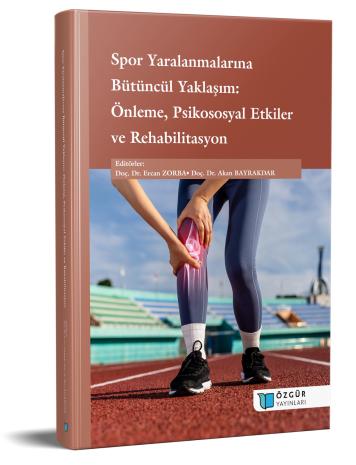
Preventive Training Methods in Sports Injuries
Chapter from the book:
Zorba,
E.
&
Bayrakdar,
A.
(eds.)
2025.
A Holistic Approach to Sports Injuries: Prevention, Psychosocial Effects, and Rehabilitation.
Synopsis
Sports injuries represent a major concern that leads to performance loss, extended rehabilitation, and sport withdrawal in both professional and amateur athletes. In recent years, preventive training strategies have demonstrated substantial efficacy in reducing injury risk. This study evaluates the most effective preventive training methods for sports injuries based on recent systematic reviews and meta-analyses. Evidence indicates that strength training can reduce acute and overuse injuries by up to 66%, while neuromuscular training can lower the incidence of lower extremity injuries by approximately 27% (Lauersen vd., 2018; Hübscher vd., 2010). Furthermore, multicomponent programs incorporating strength, balance, agility, flexibility, and plyometric exercises are shown to produce the most consistent protective effects (Padua vd., 2018; Leppänen vd., 2014). Optimal preventive programs should be conducted one to two times per week, for 20–30 minutes per session, and maintained for at least six months. Additionally, individualized training protocols and the use of protective equipment contribute significantly to injury reduction. In conclusion, structured, long-term, and individualized multicomponent training programs are among the most scientifically validated strategies to mitigate sports injury risk. Future directions suggest that artificial intelligence and biomechanical data analytics will play a crucial role in developing more personalized preventive exercise models.

